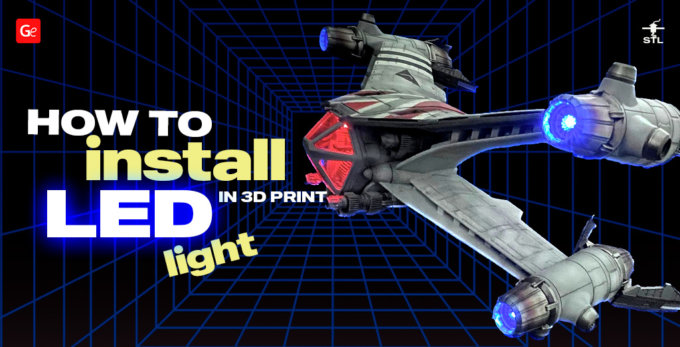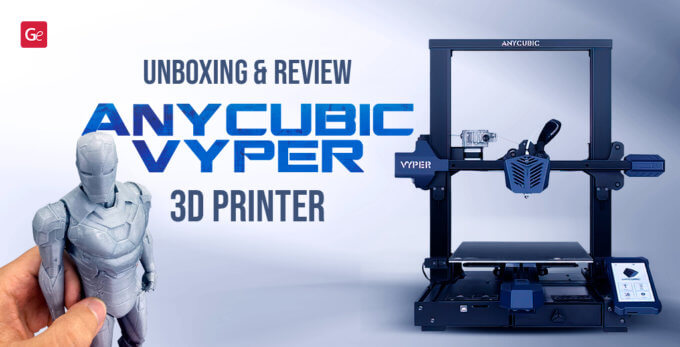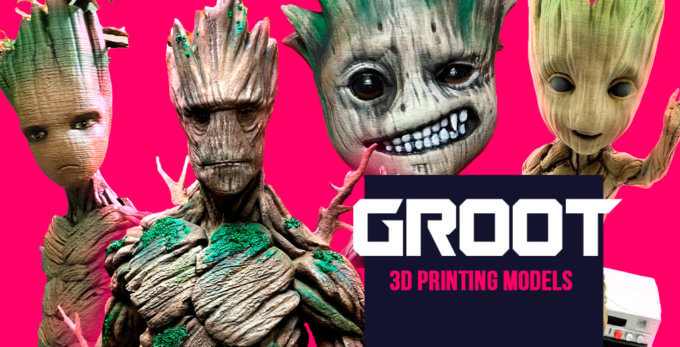Modern technologies continually develop. Experts are always in search of new methods to simplify everyday tasks, and such positive changes are widely used everywhere, including the 3D printing industry. You can 3D print without supports, eliminate additional structures, save filament and your time. And your result will look fantastic and professional even if a 3D print is crafted at home, on an affordable FDM, SLA and other types of 3D printers.
Gambody recently discussed the two main types of supports used in 3D printing. However, it is also possible to eliminate the use of the support structure and create impressive complicated models at home with no additional material.
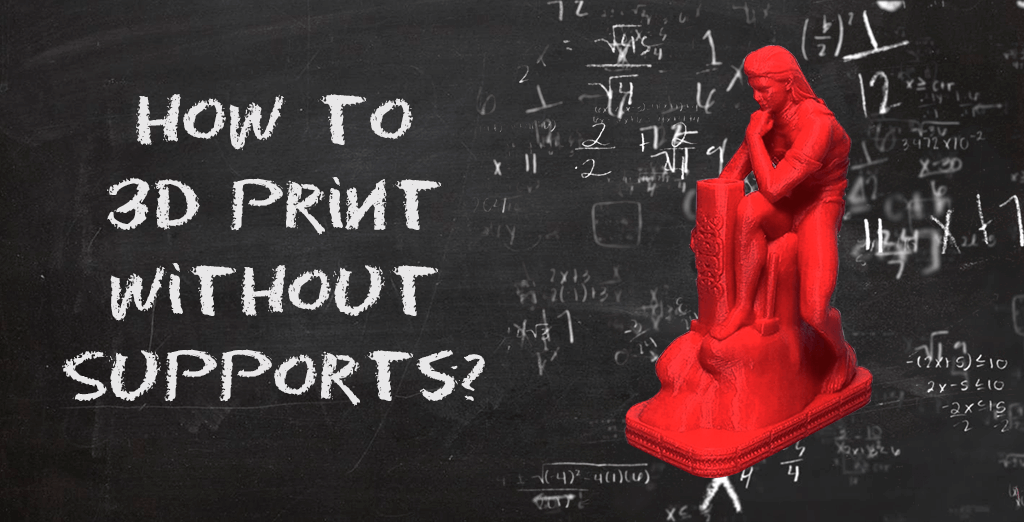
3D Print Without Supports
Gambody – Premium 3D printing marketplace offers many remarkable character models and 3D printing figurines from famous movies and games. Many of the models require the least amount of support structures while being printed. While some parts of the projects require no supports at all.
It is a must to talk about different methods that allow you to create fantastic 3D prints with no supports even when the model requires them. Sometimes you might experience issues while trying to 3D print a model without support material. In this case, read Gambody’s troubleshooting guide to fix the most common 3D printer problems as your issues might not be connected to support structure at all.
There are several rules to follow when you wish to eliminate supports and 3D print impressive masterpieces. It is also interesting to learn more about the new support-free technology called mid-air 3D printing and watch some stunning videos.
Mid-air 3D Printing
Several experiments were conducted by the University of Illinois, which led to the development of an impressive technique. It is called mid-air 3D printing.
Such method proved to work in the university laboratory. A new 3D printer created by the university engineers was capable of 3D printing dissolvable sugar scaffolds. The machine does not use layer-upon-layer technology. Instead, it creates a network of thin isomalt ribbons and builds complex shapes around them.
This new creation cannot be used at home at the moment since no slicing program supports mid-air 3D printing settings. Still, if you are interested in this new technology, you can learn more about a custom g-code generation and try your luck in this sphere.
While mid-air 3D printing is being developed and tested to be possibly used in tissue engineering in the future, you can learn how to craft overhangs without supports today.
3D Printing Without Supports: Under 45 Degrees Rule
It is simple to eliminate complex support structures if you follow the under-45-degrees rule. What does it mean?
Any model that is designed with all the angles being less than 45 degrees can be 3D printed at home with no supports at all. It is a real-working solution which requires some extra work while designing or cutting your 3D printing model in slicing software. But all the spare time spent to comply with the rule is worth it.
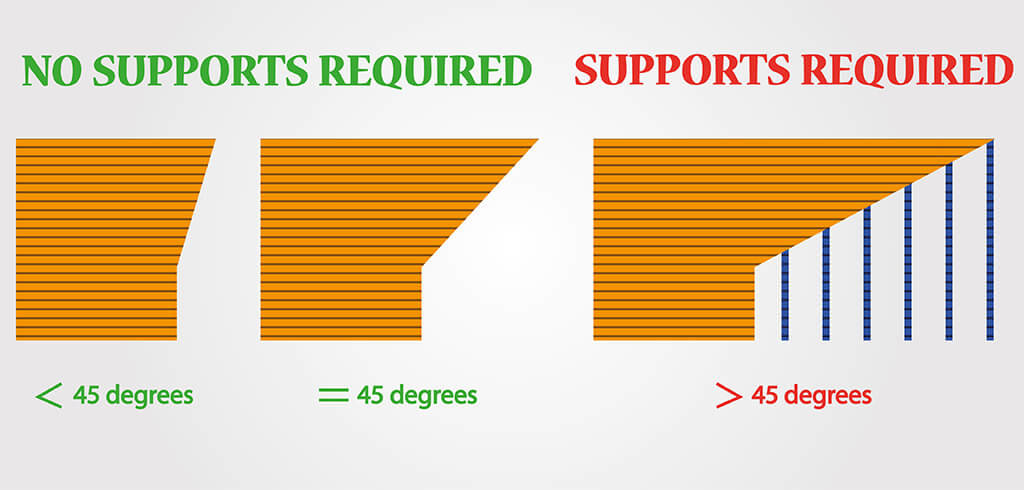
When you follow the under 45-degree angle rule while 3D printing without supports, you make your 3D printer craft layer by layer with each new one being offset by no more than 50 per cent. It means that at least half of the new layer area contacts the previous layer and stays put because there is enough base onto which to grab.
Complex objects often have complex shapes where you cannot escape angles over 45 degrees. In such situations, you can follow the second “background as support” rule and 3D print impressive models with severe overhangs.
3D Prints with No Supports: Background as Support Rule
The designing of a future 3D print model is similar to the work of a sculptor. You have to think about every part of the project, especially the ones that require support or they could collapse because of the weight.
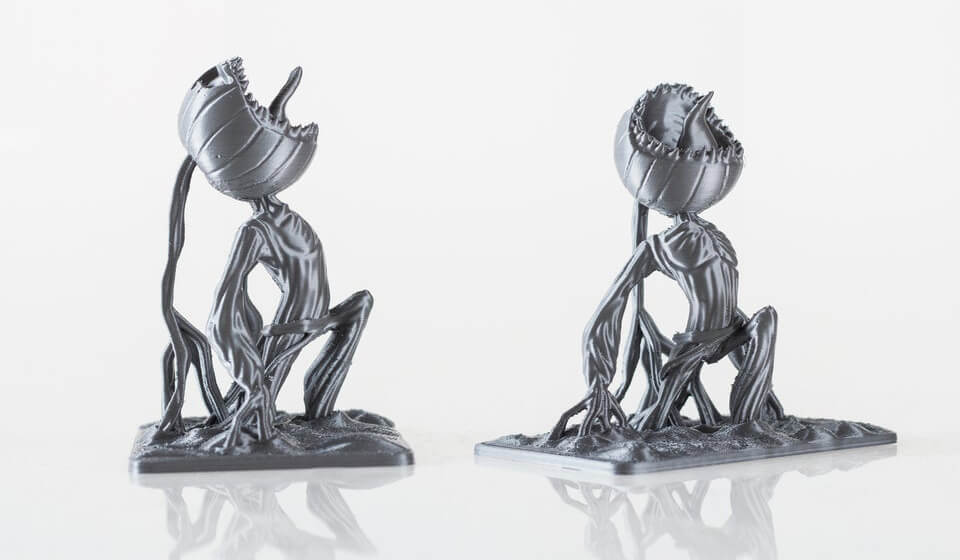
Many complex 3D printing models require supports, but it is always possible to make all the supports a part of the print. You can use background and additional objects to hide supports and get rid of extra filament because there will be no support structures to clear after the printing process.
In other words, the background can become the support on its own. For instance, if your model has cushions or clothes folds, they can be used to support the figure’s arms or legs. The hair can naturally support the character’s chin. A long gown can hide supports for the legs, etc.
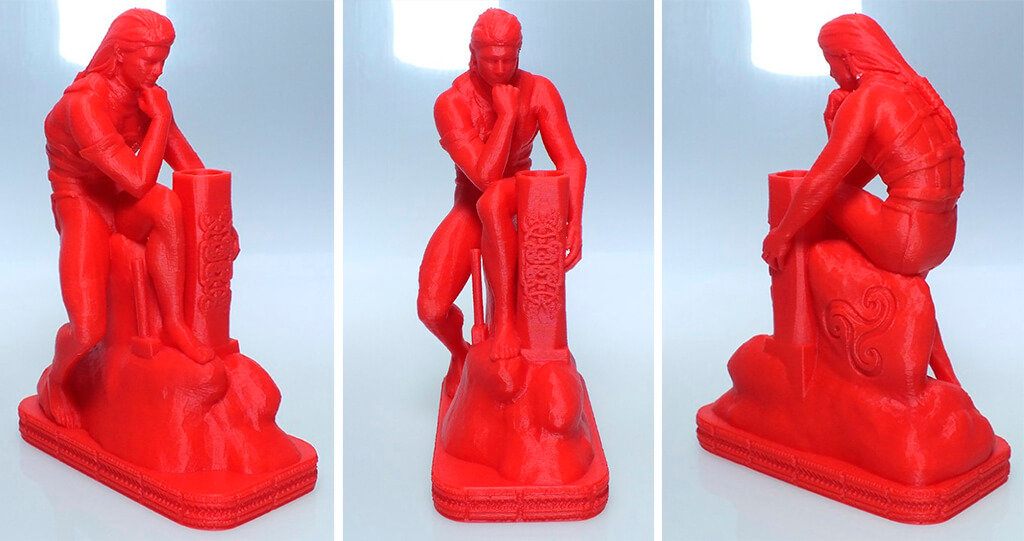
There are many fantastic ideas on how to 3D print without supports while still using them as non-removable hidden structures.
Playing with the model’s poses and additional objects (base, stones, armour, etc.) can save you many nerves and filament.
3D Print Without Support Structure: Bridge Rule
If your 3D printing model consists of bridges, the chances of using the support structure are incredibly high. A bridge is considered the most challenging overhang of all.
There is a bridge rule to avoid supports. Any bridge that is 5mm or less in length can be 3D printed with no support material.
When working with bridges, slow down. The slower your 3D printer goes, the smoother the final result will be. Layers will adhere better, and the bridge will become stronger and neater.
There is also one trick when you have to 3D print a sophisticated bridge that is longer than 5mm and wish to eliminate support material.
Look attentively at your project. When the bridge looks complicated and challenging when viewed vertically, it might become an easy no-support print when you rotate the model at 90 degrees and print on the back.
Such orientation change can work fantastically and help you to create an outstanding bridge without support. Of course, such a trick will not work with bridges that are not perfectly levelled and require many layers of filament.
Wise Tips When You Can’t 3D Print Without Support Material
No matter how hard you try to apply the bridge and under-45-degree rules while designing 3D printing MechWarrior models, famous DC Comics villains and other characters, sometimes it is impossible to eliminate supports.
Complex objects such as humans, spacecraft with interior details, robots with detailed armouring often have angles that exceed 45 degrees, overhangs and bridges. Still, some wise decisions can minimize the use of supports in 3D printing:
- Using a round base can prevent warping
- Oval/round bases improve the model’s adhesion to the bed
- Rotating a model with a horizontal arm to 45 degrees requires fewer supports under its base
- Using a chamfer to “cheat” angles that violate the 45-degree rule might sometimes work fine
- Slowing down the printing speed can improve your prints with and without supports
- Learning how to store filament can prevent moisture from ruining your 3D prints without supports
- With complicated shapes you can save the 3D print from deforming by using cooling fans aggressively
- Sometimes cutting the model in half can eliminate the use of the support structures but require extra glueing
Try to add supports to areas which won’t spoil the whole look of the model once they are removed.
For example, adding support material to the underside of the base is a smart decision. Even if the bottom gets damaged, you can clean it and sand it to remove the defects while saving the more complex object from support usage.
3D Print with Soluble Supports
Modern materials are impressive. Many printers support HIPS and PVA filament that is soluble in different substances (water, limonene).
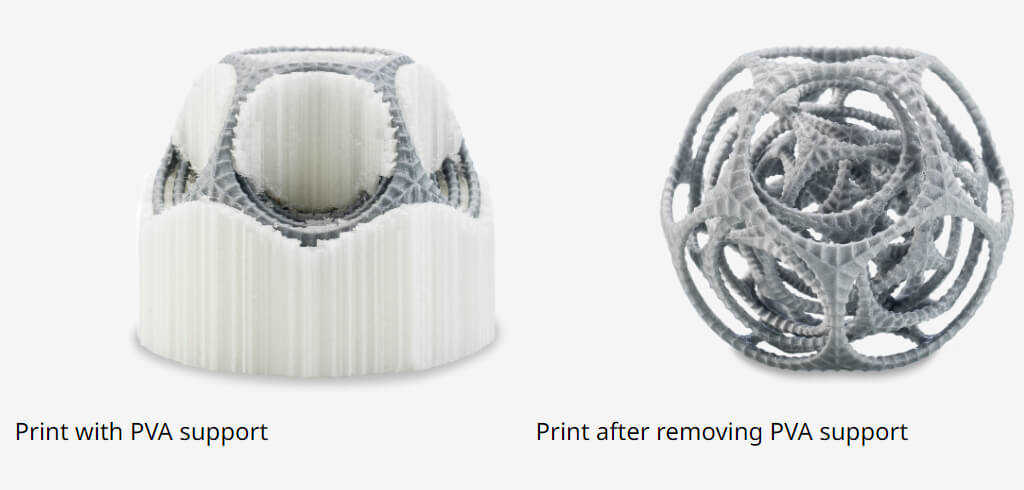
Using HIPS or PVA soluble materials as additional supports is an excellent idea. There will be no need to spend much time on clearing and smoothing the 3D print with such overhangs. All is required is the substance that can dissolve the extra filament once the print is submerged in a container with the correct type of solvent.
Using the best tips on how to 3D print without supports in your projects can help you to defy gravity. It is impressive how simple everything will become once you start to apply the under-45-degree rule, work with bridges and hide support structures in useful background and intricate object details. Just make sure to showcase your best models in Gambody Facebook group.
